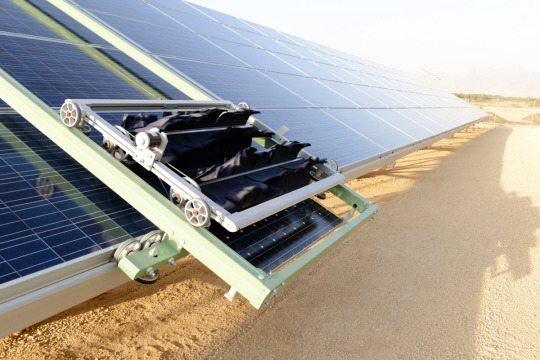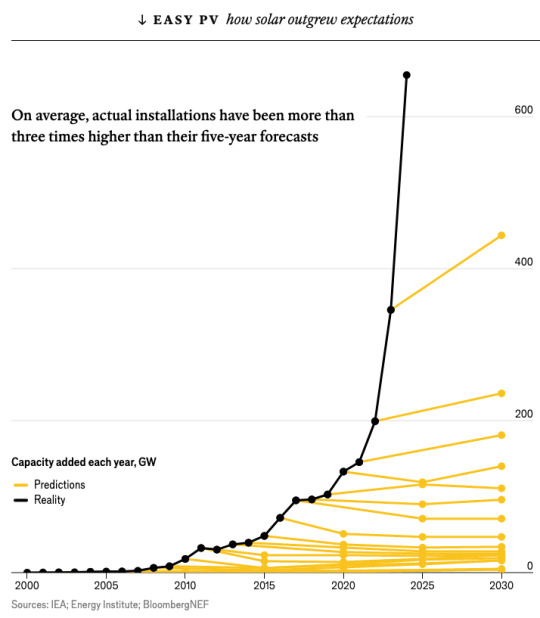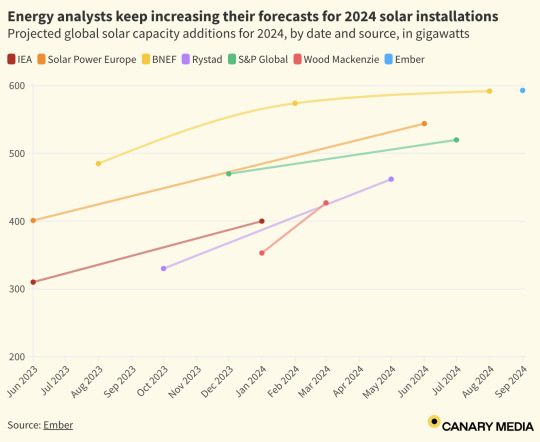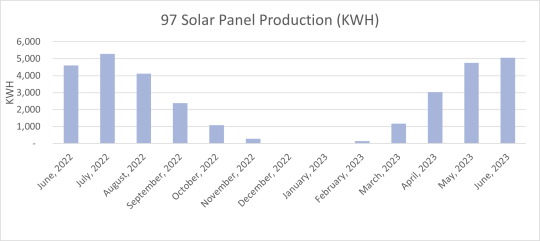#Solar Panel Forecast
Explore tagged Tumblr posts
Text
Flux Dispensers Market Set to Hit $434.7 Million by 2035
Industry revenue for Flux Dispensers is estimated to rise to $434.7 million by 2035 from $231.4 million of 2024. The revenue growth of market players is expected to average at 5.9% annually for the period 2024 to 2035.
Check detailed insights here - https://datastringconsulting.com/industry-analysis/flux-dispensers-market-research-report
Flux Dispensers are critical across several key applications including soldering operations, automotive assemblies, and aerospace manufacturing. The report unwinds growth & revenue expansion opportunities at Flux Dispensers' Material Compatibility, Application Areas, Technology Type, and End-User Industry, including industry revenue forecasts.
Industry Leadership and Competitive Landscape
The Flux Dispensers market is characterized by intense competition, with leading players such as Nordson Corporation, Henkel Corporation, Illinois Tool Works Inc., Techcon Systems, JBC Soldering Tools, Dymax Corporation, Fisnar Inc., Dover Corporation, Fuji Corporation, Intelligent Precision Systems, DKSH Holding AG, and Valco Cincinnati Consumer Products Inc. pushing the boundaries of innovation and forging strategic partnerships to capture larger market share.
The Flux Dispensers market is projected to expand substantially, driven by technological advancements and growing demand for precision in electronic assembly, automotive manufacturing, and aerospace. This growth is expected to be further supported by industry trends such as the transition from manual to automated systems, providing better operational efficiency and reducing the risk of human error in manufacturing processes.
Regional Shifts and Emerging Markets
Vietnam, Thailand, and Indonesia have emerged as fast-growing demand hubs within the Flux Dispensers market, with expected growth rates ranging from 3.8% to 5.7% for the period from 2025 to 2030. These regions have become key players in flux dispenser applications, particularly in automotive assembly and electronics manufacturing. Furthermore, these emerging markets offer new opportunities for market players to expand their footprint and diversify their revenue sources.
North America remains a leading region for Flux Dispensers, driven by the strong demand from the electronics and automotive industries. The necessity for precision in soldering processes has fueled the growth of flux dispensing tools, and innovations in dispensing technology continue to provide competitive advantages for local manufacturers.
Technological Advancements in Flux Dispensers
The Flux Dispensers industry has undergone significant technological advancements, shifting from manual to automated dispensing systems. Automated flux dispensers offer higher precision, greater operational efficiency, and a safer working environment, reducing the risk of human error and workplace hazards. This transition has revolutionized industries such as electronics assembly, printed circuit board manufacturing, and microchip production, making automated flux dispensers integral to high-precision applications.
Research Scope
Material Compatibility: Rosin Flux, No-Clean Flux, Water Soluble Flux
Application Areas: Electronics Assembly, Automotive Assembly, Aerospace Manufacturing, Others
Technology Type: Manual, Automated, Semi-automatic
Dispenser Capacity: Small Scale, Medium Scale, Large Scale
End-User Industry: Consumer Electronics, Transportation, Defense & Aerospace, Others
About DataString Consulting
DataString Consulting offers a complete range of market research and business intelligence solutions for both B2C and B2B markets under one roof. We provide bespoke market research projects tailored to meet the specific strategic objectives of your business. Our leadership team has more than 30 years of combined experience in market and business research and strategy advisory globally. We monitor high-growth segments across more than 15 industries, offering insights that help companies formulate effective strategies for market expansion and diversification.
Contact Us to learn more about how we can help you with strategy consulting, opportunity assessment, and solutions to business challenges.
#Flux Dispensers Market#Flux Dispensers#Market Growth#Industry Forecast#Electronics Assembly#Automotive Repairs#Solar Panel Manufacturing#Medical Device Production#Technology Advancements#Environmental Regulations#Market Leadership#Market Expansion#Revenue Forecast#Supply Chain Evolution#Strategic Collaborations#Market Opportunities#Electronics Manufacturing#Global Market Insights#Industry Trends#Emerging Markets#North America Market#Asia-Pacific Market#Vietnam Market#Thailand Market#Indonesia Market#Industrial Automation#Precision Manufacturing#Flux Dispensing Systems#Market Research#DataString Consulting
0 notes
Text
#Satellite Solar Panels and Array#Satellite Solar Panels and Array Market#Satellite Solar Panels and Array Industry#Satellite Solar Panels and Array Market Trends#Satellite Solar Panels and Array Market Report#Satellite Solar Panels and Array Market Value#Satellite Solar Panels and Array Market Forecast#Satellite Solar Panels and Array Market Growth
0 notes
Text
Global Solar Panel Automatic Cleaning Robot Market Is Estimated To Witness High Growth Owing To Increasing Demand for Efficient Cleaning Solutions

The global Solar Panel Automatic Cleaning Robot Market is estimated to be valued at US$ 169.3 Mn in 2020 and is expected to exhibit a CAGR of 11.2% over the forecast period of 2021-2028, as highlighted in a new report published by Coherent Market Insights. A) Market Overview: Solar panel automatic cleaning robots are innovative technological solutions that are designed to clean solar panels and remove dust, dirt, and debris that can hinder their performance. These robots offer several advantages such as increased energy efficiency, improved power generation, reduced maintenance costs, and extended panel lifespan. They are equipped with advanced sensors, brushes, and water jets to provide thorough and effective cleaning without the need for manual intervention. The growing adoption of solar panels for renewable energy generation across various industries is driving the demand for efficient cleaning solutions such as solar panel automatic cleaning robots. B) Market Key Trends: One key trend observed in the Solar Panel Automatic Cleaning Robot Market is the integration of artificial intelligence (AI) and Internet of Things (IoT) technologies. These robots are now equipped with AI algorithms that enable them to autonomously navigate the solar panel arrays, detect areas that require cleaning, and optimize their cleaning patterns. The integration of IoT technology allows for real-time monitoring and control of the cleaning process, providing valuable data on panel performance and maintenance needs. For example, Ecoppia's T4 cleaning robot utilizes AI and cloud-based analytics to optimize cleaning efficiency and reduce water consumption. C) PEST Analysis: - Political: Government policies promoting renewable energy adoption and investment in clean technologies are creating a favorable political environment for the Solar Panel Automatic Cleaning Robot Market. - Economic: The declining cost of solar panels and increasing focus on sustainable energy sources are driving the economic growth of the market. - Social: Growing environmental consciousness and awareness of the benefits of solar energy are fueling the social acceptance and demand for solar panel automatic cleaning robots. - Technological: Advancements in sensor technologies, AI algorithms, and IoT connectivity are driving the technological advancements in the market, enabling more efficient and effective cleaning solutions. D) Key Takeaways: - The Global Solar Panel Automatic Cleaning Robot Market Demand is expected to witness high growth, exhibiting a CAGR of 11.2% over the forecast period, due to increasing demand for efficient cleaning solutions. - Asia-Pacific is expected to be the fastest-growing and dominating region in the market, driven by the rapid adoption of solar panels in countries like China and India. - Key players operating in the global Solar Panel Automatic Cleaning Robot Market include Ecoppia, Solavio Labs Private Limited, SCM, Indisolar Products Private Limited, Bladeranger, INTEGRA GLOBAL CO. LTD, Miraikikai, SolarCleano, SKYROBOT lnc., Taypro Private Limited, Skilancer Solar Private Limited, Nocca Robotics Pvt. Ltd., Infiction Labs Pvt Ltd., SunPower Corporation, Boson Robotics LTD., Serbot AG, Nomadd Desert Solar Solutions, Heliotex LLC., SunBrush mobil GmbH, and Alion Energy. These players are focusing on technological advancements, partnerships, and collaborations to gain a competitive edge in the market. In conclusion, the global Solar Panel Automatic Cleaning Robot Market is experiencing significant growth due to the increasing demand for efficient cleaning solutions for solar panels. The integration of AI and IoT technologies is a key trend driving market growth. The market is projected to expand at a steady pace over the forecast period, with Asia-Pacific emerging as a leading region. Key players in the market are actively investing in research and development to enhance their product offerings and cater to the evolving needs of the market.
#Solar Panel Automatic Cleaning Robot Market#Solar Panel Automatic Cleaning Robot Market Outlook#Solar Panel Automatic Cleaning Robot Market Insights#Solar Panel Automatic Cleaning Robot Market Forecast#Solar Panel Automatic Cleaning Robot Market Analysis#solar panels#electricity generation#cooler temperature#machine learning#Coherent Market Insights
0 notes
Text
Solar Panel Recycling Management Market Analysis Key Trends, Growth Opportunities, Challenges, Research, Outlook to 2032
Overview of the Market:
Solar Panel Recycling Management Market Overview: The solar panel recycling management market is an emerging sector within the renewable energy industry. With the increasing deployment of solar photovoltaic (PV) systems, there is a growing need to manage end-of-life solar panels in an environmentally sustainable manner. This market focuses on the collection, processing, and recycling of solar panels to recover valuable materials and reduce waste.
Solar Panel Recycling Market is expected to surpass the value of US$ 1.8 Bn by 2031, expanding at a CAGR of 37.0% during the forecast Period.
Promising Growth and Demand: The solar panel recycling management market has witnessed significant growth in recent years, driven by several factors. Firstly, the lifespan of solar panels is typically around 25 to 30 years, and as older panels reach their end of life, the demand for recycling services increases. Additionally, as the solar industry continues to expand, there is a rising focus on sustainability and circular economy principles, which promotes the responsible management of solar panel waste. Government regulations and policies aimed at reducing electronic waste and promoting recycling also contribute to market growth.
Platform Type: The solar panel recycling management market involves various platform types for collection, processing, and recycling:
Collection and Logistics: This platform type focuses on establishing collection networks and logistical operations to efficiently collect used solar panels from various sources, including residential, commercial, and utility-scale installations. It involves setting up collection centers, transportation, and storage facilities.
Recycling and Processing: This platform type is responsible for the recycling and processing of end-of-life solar panels. It includes the dismantling and separation of different components, such as glass, metals, and semiconductor materials, for further recycling or recovery.
Technology: Several technologies are utilized in the recycling and processing of solar panels:
Mechanical Shredding and Separation: This technology involves the use of mechanical processes to shred solar panels into smaller pieces and separate different materials through techniques such as shredding, grinding, sieving, and magnetic separation.
Thermal Processing: Thermal technologies, such as pyrolysis or thermal depolymerization, utilize heat to break down solar panels into their constituent materials. These processes can recover valuable materials and remove hazardous substances.
Chemical Processes: Chemical treatments, such as leaching and solvent extraction, are used to dissolve and separate specific components from solar panels. This can enable the recovery of valuable materials, such as metals or semiconductor materials.
End User Industry: The solar panel recycling management market serves various stakeholders and end user industries, including:
Solar Industry: Solar panel manufacturers and installers are actively involved in recycling management to ensure responsible end-of-life handling of their products. They collaborate with recycling companies and establish take-back programs to collect and recycle used solar panels.
Waste Management Companies: Waste management companies play a crucial role in the collection, transportation, and processing of end-of-life solar panels. They collaborate with various stakeholders to establish efficient recycling systems and manage the disposal of hazardous waste in compliance with environmental regulations.
Recycling Companies: Specialized recycling companies are engaged in the recycling and recovery of valuable materials from solar panels. They employ innovative technologies to extract materials like glass, metals, and semiconductor components for reuse or repurposing.
Scope:
The solar panel recycling management market has a global scope, as the need for responsible end-of-life management of solar panels exists across regions. The market encompasses various activities, including collection, transportation, processing, and recycling of solar panels. Market statistics, growth projections, and demand may vary across regions due to factors such as regulatory frameworks, market maturity, and the level of solar panel deployment.
The market's scope extends to different stages of the solar panel life cycle, from production and installation to end-of-life management. As the solar industry continues to grow, the demand for efficient and environmentally sustainable recycling management will increase, presenting opportunities for innovation and market development.
In conclusion, the solar panel recycling management market is experiencing promising growth globally. The focus on sustainability, circular economy principles, and government regulations drive the demand for responsible end-of-life management of solar panels. The market serves various stakeholders, including solar industry participants, waste management companies, and recycling firms. As the number of decommissioned solar panels increases, the demand for efficient and environmentally friendly recycling management will continue to rise, providing opportunities for market players in the renewable energy sector and waste management industry.
We recommend referring our Stringent datalytics firm, industry publications, and websites that specialize in providing market reports. These sources often offer comprehensive analysis, market trends, growth forecasts, competitive landscape, and other valuable insights into this market.
By visiting our website or contacting us directly, you can explore the availability of specific reports related to this market. These reports often require a purchase or subscription, but we provide comprehensive and in-depth information that can be valuable for businesses, investors, and individuals interested in this market.
“Remember to look for recent reports to ensure you have the most current and relevant information.”
Click Here, To Get Free Sample Report: https://stringentdatalytics.com/sample-request/solar-panel-recycling-management-market/11372/
Market Segmentations:
Global Solar Panel Recycling Management Market: By Company • First Solar • Envaris • REMA PV Systems • Darfon Electronics • Rinovasol • Chaoqiang Silicon Material • Suzhou Shangyunda Electronics • PV Recycling • Silcontel • Cellnex Energy • IG Solar Private Global Solar Panel Recycling Management Market: By Type • Monocrystalline cells • Polycrystalline cells Global Solar Panel Recycling Management Market: By Application • Industrial • Commercial • Utility • Others Global Solar Panel Recycling Management Market: Regional Analysis The regional analysis of the global Solar Panel Recycling Management market provides insights into the market's performance across different regions of the world. The analysis is based on recent and future trends and includes market forecast for the prediction period. The countries covered in the regional analysis of the Solar Panel Recycling Management market report are as follows: North America: The North America region includes the U.S., Canada, and Mexico. The U.S. is the largest market for Solar Panel Recycling Management in this region, followed by Canada and Mexico. The market growth in this region is primarily driven by the presence of key market players and the increasing demand for the product. Europe: The Europe region includes Germany, France, U.K., Russia, Italy, Spain, Turkey, Netherlands, Switzerland, Belgium, and Rest of Europe. Germany is the largest market for Solar Panel Recycling Management in this region, followed by the U.K. and France. The market growth in this region is driven by the increasing demand for the product in the automotive and aerospace sectors. Asia-Pacific: The Asia-Pacific region includes Singapore, Malaysia, Australia, Thailand, Indonesia, Philippines, China, Japan, India, South Korea, and Rest of Asia-Pacific. China is the largest market for Solar Panel Recycling Management in this region, followed by Japan and India. The market growth in this region is driven by the increasing adoption of the product in various end-use industries, such as automotive, aerospace, and construction. Middle East and Africa: The Middle East and Africa region includes Saudi Arabia, U.A.E, South Africa, Egypt, Israel, and Rest of Middle East and Africa. The market growth in this region is driven by the increasing demand for the product in the aerospace and defense sectors. South America: The South America region includes Argentina, Brazil, and Rest of South America. Brazil is the largest market for Solar Panel Recycling Management in this region, followed by Argentina. The market growth in this region is primarily driven by the increasing demand for the product in the automotive sector.
Click Here, To Purchase Premium Report: https://stringentdatalytics.com/purchase/solar-panel-recycling-management-market/11372/?license=single
Reasons to Purchase Solar Panel Recycling Management Market Report:
Informed Decision-Making: A comprehensive market research report provides valuable insights and analysis of the district heating market, including market size, growth trends, competitive landscape, and key drivers and challenges. This information allows businesses to make informed decisions regarding investments, expansion strategies, and product development.
Market Understanding: Research reports offer a deep understanding of the district heating market, including its current state and future prospects. They provide an overview of market dynamics, such as industry trends, regulatory frameworks, and technological advancements, helping businesses identify opportunities and potential risks.
Competitive Analysis: Market research reports often include a competitive analysis, profiling key players in the district heating market. This analysis helps businesses understand their competitors' strategies, market share, and product offerings. It enables companies to benchmark themselves against industry leaders and identify areas for improvement or differentiation.
Market Entry and Expansion: For companies planning to enter the district heating market or expand their existing operations, a market research report provides crucial information about market saturation, customer preferences, and regional dynamics. It helps businesses identify viable market segments, target demographics, and potential growth areas.
Investment Opportunities: Market research reports highlight investment opportunities in the district heating market, such as emerging technologies, untapped regions, or niche markets. This information can assist investors in making informed decisions about capital allocation and portfolio diversification.
Risk Mitigation: By analyzing market trends, customer preferences, and regulatory frameworks, market research reports help businesses identify and mitigate potential risks and challenges. This proactive approach can minimize uncertainties and optimize decision-making processes.
Cost Savings: Investing in a market research report can potentially save businesses time and resources. Rather than conducting extensive primary research or relying on fragmented information sources, a comprehensive report consolidates relevant data, analysis, and insights in one place, making it a cost-effective solution.
Industry Benchmarking: Market research reports provide benchmarks and performance indicators that allow businesses to compare their performance with industry standards. This evaluation helps companies identify areas where they excel or lag behind, facilitating strategic improvements and enhancing their competitive position.
Long-Term Planning: A global market research report offers a forward-looking perspective on the district heating market, including growth projections, emerging trends, and future opportunities. This insight aids businesses in long-term planning, resource allocation, and adapting their strategies to changing market dynamics.
Credibility and Authority: Market research reports are typically prepared by industry experts, analysts, and research firms with in-depth knowledge of the subject matter. Purchasing a reputable report ensures access to reliable and credible information, enhancing decision-making processes and providing confidence to stakeholders.
In general, market research studies offer companies and organisations useful data that can aid in making decisions and maintaining competitiveness in their industry. They can offer a strong basis for decision-making, strategy formulation, and company planning.
About US:
Stringent Datalytics offers both custom and syndicated market research reports. Custom market research reports are tailored to a specific client's needs and requirements. These reports provide unique insights into a particular industry or market segment and can help businesses make informed decisions about their strategies and operations.
Syndicated market research reports, on the other hand, are pre-existing reports that are available for purchase by multiple clients. These reports are often produced on a regular basis, such as annually or quarterly, and cover a broad range of industries and market segments. Syndicated reports provide clients with insights into industry trends, market sizes, and competitive landscapes. By offering both custom and syndicated reports, Stringent Datalytics can provide clients with a range of market research solutions that can be customized to their specific needs
Contact US:
Stringent Datalytics
Contact No - +1 346 666 6655
Email Id - [email protected]
Web - https://stringentdatalytics.com/
#Solar Panel Recycling Management Market Analysis Key Trends#Growth Opportunities#Challenges#Research#Outlook to 2032#Overview of the Market:#Solar Panel Recycling Management Market Overview: The solar panel recycling management market is an emerging sector within the renewable en#there is a growing need to manage end-of-life solar panels in an environmentally sustainable manner. This market focuses on the collection#processing#and recycling of solar panels to recover valuable materials and reduce waste.#Solar Panel Recycling Market is expected to surpass the value of US$ 1.8 Bn by 2031#expanding at a CAGR of 37.0% during the forecast Period.
0 notes
Text
From the article:
It’s difficult to overstate how rapidly Australians have embraced solar power, and how much it has exceeded expectations. In 2011, the forecast was that rooftop solar would eventually contribute 4 terawatt hours of electricity. In the context of the Australian grid, this was next to nothing – barely 2% of total generation. For some, it raised the question of whether it was really worth the cost. More than a decade on, that number has been eclipsed more than six times over in the five eastern states connected by the country’s main power grid. Rooftop solar panels connected to the National Electricity Market generated 24.6TWh over the last year of data. Put another way, homes have contributed 11.6% of electricity – nearly as much as wind farms, comfortably more than large-scale solar farms or hydro plants, and twice as much as gas-fired power. More than 3.7m households and small businesses have solar systems. It means more than one in three homes across the country generate their own power when the sun is out.
#good news#solar power#hope#hopepunk#solar bunk#sustainable energy#green energy#climate change#global warming#environment#climate anxiety#ecoanxiety
400 notes
·
View notes
Text

The rare compound solar-lunar-nephelogical eclipse
Eclipse Clouds [Explained]
Transcript Under the Cut
[Cueball sits on an office chair at a desk, typing at his laptop.] Cueball: These eclipse weather forecasts are killing me. Laptop: refresh
[Cueball remains at his desk. An off-panel voice from the left speaks.] Off-panel voice: So you really want to see something block out the sun...
[Cueball is still at his desk.] Off-panel voice: ...But not a cloud. It has to be the Moon specifically. Cueball: My tastes are very singular!
989 notes
·
View notes
Text
"This year the world will make something like 70bn of these solar cells, the vast majority of them in China, and sandwich them between sheets of glass to make what the industry calls modules but most other people call panels: 60 to 72 cells at a time, typically, for most of the modules which end up on residential roofs, more for those destined for commercial plant. Those panels will provide power to family homes, to local electricity collectives, to specific industrial installations and to large electric grids; they will sit unnoticed on roofs, charmingly outside rural schools, controversially across pristine deserts, prosaically on the balconies of blocks of flats and in almost every other setting imaginable.
Once in place they will sit there for decades, making no noise, emitting no fumes, using no resources, costing almost nothing and generating power. It is the least obtrusive revolution imaginable. But it is a revolution nonetheless.
Over the course of 2023 the world’s solar cells, their panels currently covering less than 10,000 square kilometres, produced about 1,600 terawatt-hours of energy (a terawatt, or 1tw, is a trillion watts). That represented about 6% of the electricity generated world wide, and just over 1% of the world’s primary-energy use. That last figure sounds fairly marginal, though rather less so when you consider that the fossil fuels which provide most of the world’s primary energy are much less efficient. More than half the primary energy in coal and oil ends up as waste heat, rather than electricity or forward motion.
What makes solar energy revolutionary is the rate of growth which brought it to this just-beyond-the-marginal state. Michael Liebreich, a veteran analyst of clean-energy technology and economics, puts it this way:
In 2004, it took the world a whole year to install a gigawatt of solar-power capacity... In 2010, it took a month In 2016, a week. In 2023 there were single days which saw a gigawatt of installation worldwide. Over the course of 2024 analysts at BloombergNEF, a data outfit, expect to see 520-655gw of capacity installed: that’s up to two 2004s a day...

And it shows no signs of stopping, or even slowing down. Buying and installing solar panels is currently the largest single category of investment in electricity generation, according to the International Energy Agency (IEA), an intergovernmental think-tank: it expects $500bn this year, not far short of the sum being put into upstream oil and gas. Installed capacity is doubling every three years. According to the International Solar Energy Society:
Solar power is on track to generate more electricity than all the world’s nuclear power plants in 2026 Than its wind turbines in 2027 Tthan its dams in 2028 Its gas-fired power plants in 2030 And its coal-fired ones in 2032.
In an IEA scenario which provides net-zero carbon-dioxide emissions by the middle of the century, solar energy becomes humankind’s largest source of primary energy—not just electricity—by the 2040s...
Expecting exponentials to carry on is rarely a basis for sober forecasting. At some point either demand or supply faces an unavoidable constraint; a graph which was going up exponentially starts to take on the form of an elongated S. And there is a wide variety of plausible stories about possible constraints...
All real issues. But the past 20 years of solar growth have seen naive extrapolations trounce forecasting soberly informed by such concerns again and again. In 2009, when installed solar capacity worldwide was 23gw, the energy experts at the IEA predicted that in the 20 years to 2030 it would increase to 244gw. It hit that milestone in 2016, when only six of the 20 years had passed. According to Nat Bullard, an energy analyst, over most of the 2010s actual solar installations typically beat the IEA’s five-year forecasts by 235% (see chart). The people who have come closest to predicting what has actually happened have been environmentalists poo-pooed for zealotry and economic illiteracy, such as those at Greenpeace who, also in 2009, predicted 921gw of solar capacity by 2030. Yet even that was an underestimate. The world’s solar capacity hit 1,419gw last year.
-via The Economist, June 20, 2024
--
Note: That graph. Is fucking ridiculous(ly hopeful).
For perspective: the graph shows that in 2023, there were about 350 GW of solar installed. The 5-year prediction from 2023 said that we'd end up around 450 GW by 2030.
We hit over 600 GW in the first half of 2024 alone.
This is what's called an exponential curve. It's a curve that keeps going up at a rate that gets higher and higher with each year.
This, I firmly believe, is a huge part of what is going to let us save the world.
#solar power#solar energy#climate change#fossil fuels#solarpunk#hopepunk#solar age#optimism#renewable#renewable energy#clean energy#green energy#renewables#solar panels#good news#hope
583 notes
·
View notes
Text

Excerpt from this story from Canary Media:
Solar is becoming predictable in its unpredictability — time and time again, experts have underestimated how much the clean energy source will grow globally. This year is no different.
The price of panels has continued to plummet and their efficiency keeps rising, while deadlines for meeting climate laws creep closer. The result? The world is installing more solar than ever before — at a pace that even many top energy analysts didn’t see coming, according to a new analysis by think tank Ember.
So far this year, 29 percent more solar has been installed than was in the same period last year, per Ember. By the end of 2024, Ember says the world will be on track to reach 593 gigawatts of solar installations — 200 GW more than the International Energy Agency (IEA) predicted at the start of the year. That’s a significant underestimate: Those extra gigawatts alone represent more solar than the entire world built in 2021.
This year’s record-breaking solar installations follow another peak year in 2023, when installations grew by 86 percent over 2022.
20 notes
·
View notes
Text
I get inspired too easily. I stumbled upon @silverbelle1220’s dorm but couldn’t see the pictures, so I watched a YouTube video on building a dorm to get a general understanding. That made me download and install Engelhardt Hall, and I love its design so much that I ended up building a dorm of my own.
Without much further ado, I introduce you to my dorm: Evans Memorial Hall.


Here's the exterior and entrance.


The first door’s main hallway. Notice there are two elevators at the end leading to the second floor. The dorms I lived in while at college had elevators, so I thought, why not use them instead of stairs?

Another hallway leading to…


The ballet studio. OK, this is a rather odd room I built because I just wanted to add something unique to my dorm.


Cafeteria.


Living room. Aside from the TV, it has a piano, violin, and easel.


Library. It also has chess tables.

Computer room.


Games room, where sims can dance to the stereo or play group games like Myshuno, mahjong, and Don’t Wake the Llama.

Second floor main hallway. The arches on both sides lead to hallways with four dorm rooms and a bathroom for each.

Dorm room. Each has a single bed, dresser, desk, desk chair, bookshelf, mini-fridge, microwave oven, smoke alarm, lamp, and mirror. I make the rooms plain so players can decorate them however they like.

Bathrooms.

Roof. It has a few solar panels to prove that its electricity source is green. I added two lightning rods so I can pretend they prevent the dorm from being damaged by lightning. Oh, and there’s an atmospheric forecaster because it kinda looks like an antenna.


Bird’s eye view of each floor. Apparently, I have a thing for ceiling fans.
Bear in mind that I have all EPs and SPs installed. Most of the objects I use for the cafeteria come from Pets. The dorm room furniture and mirrors come from the IKEA SP. The lightning rod and atmospheric forecaster come from Seasons. The mahjong table comes from Bon Voyage. The ballet barre and Don’t Wake the Llama Table come from FreeTime. The solar panels come from the Mansion & Garden SP. The only “CC” I use are the prima ballerina poster from the FreeTime pre-order bonus and the NOMINELL chair from the IKEA SP pre-order bonus.
Anyway, if anyone wants to give feedback on their overall impressions of the building and what I need to work on, feel free to do so. If anyone wants to playtest it, just say the word and I’ll DM you the link. I already played with it for a bit, but I’m not confident enough to put the link available for everyone yet.
Shoutout to @silverbelle1220 and SIMSLEX on YouTube for inspiring me to build my dorm with their own.
4 notes
·
View notes
Text
Creating the world’s “greenest” highway in a desert city: URB city design

Bagherian’s concept includes “water-sensitive landscape design” that includes native flora and drought-resistant plants suited to the arid climate, and soil mixed with zeolite, an absorbent crystal that aids water retention.

These “passive techniques” are complemented with smart irrigation technology, he added, “which use real-time data to adjust watering schedules based on soil moisture levels, weather forecasts, and plant needs.”
Smart tech and solar-power
The autonomous solar-powered tram is just one aspect of the proposed highway’s transport system: above the tram line, a network of green areas, parks and overpasses would increase connectivity and walkability of the city, which is currently tough to navigate on foot.
The highway would also integrate smart technology, such as “internet of things” (IoT) sensors, to manage traffic and optimize energy use.
Bagherian’s designs allow for 300-megawatt solar panels and a storage system to be embedded in the tracks, that would power the tram line, as well as generate clean energy for an estimated 130,000 homes.
And the green spaces — including parks and community gardens — would provide space for one million trees, which would also help cool the city and improve air quality.
Source
8 notes
·
View notes
Text
Sustainability in the Food and Beverage Sector: A Business Take
Sustainability in the food and beverage industry goes beyond a trendy concept—it’s a necessity. It involves ensuring that production, transportation, and sales processes minimize environmental harm while maintaining long-term ecological balance. Businesses that adopt sustainable practices not only contribute to a healthier planet but also build resilience and gain consumer trust.
Read More: https://theenterpriseglobe.com/business/sustainability-in-the-food-and-beverage-sector-a-business-take/
Rethinking the Value Chain
The supply chain offers a significant opportunity to drive meaningful change. Many companies depend on large suppliers who may not prioritize sustainability. Instead, businesses should focus on sourcing from certified suppliers, reducing food miles, and supporting local farmers. Local sourcing not only reduces costs and fosters goodwill but also allows companies to offer fresher products to their customers.
Another crucial factor is logistics. Are we optimizing transportation? Are we investing in fuel-efficient or electric vehicles? Such questions can reshape operations, making supply chains smarter and more sustainable.
Reducing Food Waste
Food waste remains a massive challenge. The Food and Agriculture Organization (FAO) estimates that nearly one-third of global food production is wasted. Effective demand forecasting and inventory management can prevent overproduction and spoilage. AI-driven analytics can enhance demand prediction, reducing unnecessary waste.
Repurposing excess food is another viable solution. Donating surplus food to charities or converting waste into by-products can make a significant difference. Innovative approaches, such as using fruit peels for packaging materials, demonstrate how businesses can turn waste into valuable resources.
Towards Renewable Energy & Green Operations
A major yet often overlooked issue is the energy consumption of food and beverage companies. Transitioning to renewable energy sources like solar panels, wind turbines, and energy-efficient machinery can drastically cut reliance on fossil fuels. While initial investments may seem steep, the long-term cost savings and environmental benefits are undeniable.
Water conservation is equally important. Implementing water-efficient irrigation methods, recycling water in processing plants, and reducing wastage in production can help preserve this vital resource.
Eco-Friendly Packaging Solutions
The industry’s reliance on single-use plastics is a growing concern. Consumers are demanding more eco-friendly alternatives, pushing businesses to explore biodegradable and recyclable packaging. Edible packaging, made from natural materials, is an innovative solution that reduces waste while maintaining functionality.
However, switching materials isn’t enough. Educating consumers about proper disposal methods through clear labeling and awareness campaigns ensures that recyclable and compostable packaging serves its intended purpose.
Transparency & Authentic Communication
Transparency fosters trust. Consumers want to know where their food comes from and how it is produced. Companies that openly share their sustainability efforts—including sourcing, production methods, and targets—tend to attract loyal customers. Certifications such as Fair Trade, USDA Organic, or Rainforest Alliance add credibility.
However, businesses must avoid greenwashing. Authenticity is key—sharing both successes and challenges helps build genuine connections with consumers and stakeholders.
Collaboration for Greater Impact
Sustainability is not a solo effort. Collaboration between companies, industries, and even competitors can drive significant progress. Joint initiatives can tackle larger issues such as climate change and deforestation, creating shared standards that benefit the entire sector.
Educating Employees & Consumers
Sustainability starts from within. Educating employees on conservation practices—whether through energy-saving initiatives in offices or participating in community clean-ups—creates a culture of responsibility.
Consumers also play a crucial role. Awareness campaigns that promote sustainable consumption, such as reducing meat intake or choosing seasonal produce, can drive behavioral change, influencing demand and encouraging responsible choices.
Monitoring & Measuring Progress
Setting achievable sustainability goals and tracking progress is essential. Businesses that conduct regular sustainability audits can identify areas for improvement and adjust their strategies accordingly. Measuring impact ensures that sustainability efforts remain effective and aligned with broader environmental goals.
Final Thoughts
Sustainability in the food and beverage industry is no longer optional—it’s imperative. Every effort, from rethinking supply chains to educating stakeholders, contributes to a larger movement toward environmental responsibility. The journey may be challenging, but the rewards—both for businesses and the planet—are invaluable. By working together, companies and individuals can build a future where the food and beverage industry nourishes both people and the planet.Source: https://theenterpriseglobe.com/
#theenterpriseglobe#Sustainability#FoodIndustry#EcoFriendly#GreenBusiness#SustainableLiving#FMCG#FoodInnovation#ClimateAction#ZeroWaste
2 notes
·
View notes
Text
I didn’t think I had a ton of Big Feelings about the winter weather this week, but I got a news alert that the snow forecast has increased and experienced a spike of panic.
(For those unaware, most of Texas is on its own power grid because we are Very Independent and like to pretend like we could leave the States at any time without huge repercussions. Every other state in the US is a part of much larger national grids that have federal oversight. According to our own comptroller’s website, “…[the] Texas Interconnection, Texas’ very own energy grid, was eventually established to avoid selling or purchasing electricity from other states and to establish freedom from federal oversight.”
In 2011, we had a fairly large snowstorm that caused enough issues that allegedly state officials and the organization that controls the grid were like, “This can’t happen again. We have to winterize the grid.”
They then spent a decade doing…nothing, I guess, because in 2021 we had a massive snowstorm that covered a huge chunk of the state. We were warned that rolling blackouts might be a thing, but we shouldn’t be without power for long.
One problem: they didn’t end up being rolling blackouts for a lot of people. Tons of people lost power for days. Mine was out for three days, some of my neighbors lost power for a week. My mom didn’t, and I was able to stay with her, but not everyone had that luxury. An estimated 246 people died as a result.
After our governor initially tried to blame wind turbines and solar panels for our weak grid, it came out that the main cause of failure was the fact that they spent a decade not winterizing equipment like they swore they’d do back in 2011. Never fear, though! Now that the pesky winter weather was gone, things would be normal.
Except, then on the first hot day of the year, we all got texts urging us to conserve power for the sake of the grid, so excuse me for not actually believing it’s in great shape. We didn’t have blackouts then thankfully, but it was still unnerving.
Anyway, I didn’t think I had residual feelings about this, but apparently I do.)
5 notes
·
View notes
Text




Mars’ infamous dust storms can engulf the entire planet. A new study examines how
Today’s weather report on Mars: Windy with a chance of catastrophic dust storms blotting out the sky.
In a new study, planetary scientists at the University of Colorado Boulder have begun to unravel the factors that kick off major dust storms on Mars—weather events that sometimes engulf the entire planet in swirling grit. The team discovered that relatively warm and sunny days may help to trigger them.
Heshani Pieris, lead author of the study, said the findings are a first step toward forecasting extreme weather on Mars, just like scientists do on Earth.
“Dust storms have a significant effect on rovers and landers on Mars, not to mention what will happen during future crewed missions to Mars,” said Pieris, a graduate student at the Laboratory for Atmospheric and Space Physics (LASP) at CU Boulder. “This dust is very light and sticks to everything.”
She will present the results Tuesday, Dec. 10 at the 2024 meeting of the American Geophysical Union in Washington.
To put dust storms under the magnifying glass, the researchers drew on real observations from NASA’s Mars Reconnaissance Orbiter satellite.
So far, they have identified weather patterns that may underly roughly two-thirds of the major dust storms on Mars. You won’t see Mars weather reporters standing in front of a green screen just yet, but it’s a step in the right direction, said study co-author Paul Hayne.
“We need to understand what causes some of the smaller or regional storms to grow into global-scale storms,” said Hayne, a researcher at LASP and associate professor at the Department of Astrophysical and Planetary Sciences. “We don’t even fully understand the basic physics of how dust storms start at the surface.”
Dusty demise
Dust storms on Mars are something to behold.
Many begin as smaller storms that swirl around the ice caps at the planet’s north and south poles, usually during the second half of the Martian year. (A year on Mars lasts 687 Earth days). Those storms can grow at a furious pace, pressing toward the equator until they cover millions of square miles and last for days.
The 2015 film The Martian starring Matt Damon featured one such apocalyptic storm that knocked over a satellite dish and tossed around astronauts. The reality is less cinematic. Mars’ atmosphere is much thinner than Earth’s, so dust storms on the Red Planet can’t generate much force. But they can still be trouble.
In 2018, for example, a global dust storm buried the solar panels on NASA’s Opportunity rover under a layer of dust. The rover died not long after.
“Even though the wind pressure may not be enough to knock over equipment, these dust grains can build up a lot of speed and pelt astronauts and their equipment,” Hayne said.
Hot spells
In the current study, Pieris and Hayne set their sights on two weather patterns that tend to occur every year on Mars known as “A” and “C” storms.
The team pored over observations of Mars from the Mars Climate Sounder instrument aboard the Mars Reconnaissance Orbiter over eight Mars years (15 years on Earth). In particular, Pieris and Hayne looked for periods of unusual warmth—or weeks when more sunlight filtered through Mars’ thin atmosphere and baked the planet’s surface.
They discovered that roughly 68% of major storms on the planet were preceded by a sharp rise in temperatures at the surface. In other words, the planet heated up, then a few weeks later, conditions got dusty.
“It’s almost like Mars has to wait for the air to get clear enough to form a major dust storm,” Hayne said.
The team can’t prove that those balmy conditions actually cause the dust storms. But, Pieris said, similar phenomena trigger storms on Earth. During hot summers in Boulder, Colorado, for example, warm air near the ground can rise through the atmosphere, often forming those towering, gray clouds that signal rain.
“When you heat up the surface, the layer of atmosphere right above it becomes buoyant, and it can rise, taking dust with it,” Pieris said.
She and Hayne are now gathering observations from more recent years on Mars to continue to explore these explosive weather patterns. Eventually, they’d like to get to the point where they can look at live data coming from the Red Planet and predict what could happen in the weeks ahead.
“This study is not the end all be all of predicting storms on Mars,” Pieris said. “But we hope it’s a step in the right direction.”
2 notes
·
View notes
Text

Nerd Alert Doing the Math
How do retired accountants waste their time? Well, speaking for myself, I like to over-analyze personal investments. When building our house we installed a large solar system. We are concerned about climate change and the ROI calculation from the solar installation company made the investment look attractive. The ROI calc assumed that energy costs would increase 4% per year; at the time I felt that forecast was too aggressive, but even with a lower estimate of electricity rate inflation the investment still made sense based on the amount of power the system was supposed to generate.
Now that a full year has passed I'm able to finally calculate how closely our actual production and savings matches the solar company's estimate and the answer isn't good.
Here's the summary of the comparison; our production and savings are 34% and 36%, respectively, lower than the forecast. That's very disappointing and likely the result of the 3-4 months when our panels are covered in snow. I think it was misleading at best and dishonest at worst to not adjust the estimates for the amount of snowfall our area gets every year.

The more important financial analysis compares the opportunity cost of the original investment $44,638 (net of tax credit)- i.e. what could I earn in a comparable low-risk investment over the same 25 year life of the system? Again, the answer isn't promising. In order for the solar system to save me as much as I could earn in a no-risk 30 year treasury (currently yielding 4%), energy costs have to increase by 3.73% every year for 25 years - I think (hope) that is unlikely.

From a purely financial perspective, unless energy costs in our area skyrocket or we get considerably less snow, I have to conclude that solar systems are not a good investment in our area and would be a terrible investment if not for the tax credit.
Having said all that, I don't regret installing our system because I like to think that we're helping the environment, but solar still has to improve (cost or efficiency) before it is a slam dunk investment everywhere.
36 notes
·
View notes
Text
Smart EV Charge Market Forecast: Is Your City Ready for the Surge?

Revolutionizing Electric Mobility: The Surge of Smart EV Charging Infrastructure
The global smart EV charge marketis undergoing a transformative evolution, underpinned by rapid technological innovation and the global shift toward sustainable mobility. With the smart EV charge marketestimated to reach USD 110.35 million by 2031, growing at a CAGR of 18.25% from USD 23.44 million in 2023, smart EV charging is not just an innovation—it is a cornerstone of the clean energy transition.
Request Sample Report PDF (including TOC, Graphs & Tables): https://www.statsandresearch.com/request-sample/40522-global-smart-ev-charge-market
Smart EV Charge Market Dynamics and Growth Drivers:
Rising EV Adoption Accelerates Demand
As electric vehicles become more affordable and environmental regulations tighten, the adoption of EVs is surging globally. This upward trajectory necessitates the deployment of intelligent charging infrastructure that is scalable, efficient, and grid-responsive.
Smart Integration with Renewable Energy
Modern smart EV chargers now integrate with solar, wind, and other renewable sources. By optimizing charging schedules based on energy availability and pricing, they reduce stress on grids and promote low-carbon energy consumption.
Government Incentives Fueling Infrastructure Expansion
Subsidies, tax incentives, and regulatory support across North America, Europe, and Asia-Pacific are catalyzing the installation of smart EV chargers, particularly in public and commercial spaces. These incentives are essential in transforming EV charging from a convenience into an ecosystem.
Get up to 30%-40% Discount: https://www.statsandresearch.com/check-discount/40522-global-smart-ev-charge-market
Smart EV Charge Market Segmentation Analysis
Smart EV Chargers by Connector Type
Combined Charging System (CCS)
CCS is the global standard, supporting both AC and DC charging. With compatibility across a wide range of manufacturers, CCS is the go-to solution for interoperability and ultra-fast charging, essential for commercial applications and highway corridors.
Supercharger (Tesla Proprietary)
Tesla’s proprietary Supercharger network remains dominant in ultra-rapid charging technology. Capable of delivering up to 250 kW, these chargers offer exceptional convenience for Tesla users, with network growth continuing across strategic long-distance travel routes.
Smart EV Chargers by Power Supply Range
3 to 22 kW: Residential Backbone
Ideal for home use, these chargers offer overnight charging using single-phase power. Their integration with mobile apps allows remote control, scheduling, and energy optimization, catering to daily commuter needs.
22 to 60 kW: Urban and Fleet Charging
Serving public spaces and fleet operators, mid-range chargers ensure quicker turnaround times while balancing energy consumption and grid compatibility. These systems often support load balancing and modular expansion.
>60 kW: Ultra-Fast Charging for Highways
DC fast chargers exceeding 60 kW are indispensable for highway travel and commercial hubs. Capable of charging vehicles to 80% within 15–30 minutes, they are pivotal in addressing range anxiety and promoting intercity EV use.
Smart EV Charge Market by End User
Residential Charging Units
Equipped with features like smart scheduling, Wi-Fi connectivity, and integration with solar panels, these units cater to the growing number of EV owners with personal garages or driveways. The convenience of home charging is a strong driver of adoption.
Commercial Charging Stations
Designed for scalability, commercial stations serve multiple users with high-throughput demands. Equipped with point-of-sale systems, real-time monitoring, and fleet management capabilities, these stations are central to urban planning and corporate sustainability efforts.
Regional Insights and Smart EV Charge Market Penetration
North America
Driven by state and federal incentives, North America is witnessing rapid deployment of charging networks, especially along interstate highways and urban centers.
Europe
Europe leads in sustainability initiatives, with widespread integration of EVs and smart grids. The EU's stringent carbon goals and dense urban planning make it an ideal market for fast and ultra-fast chargers.
Asia-Pacific
China dominates the regional market, supported by aggressive government mandates and mass manufacturing. India, Japan, and South Korea are scaling public charging networks to support urban electrification.
Middle East & Africa
Emerging interest in sustainability and economic diversification is driving growth, particularly in the UAE and South Africa. Investments are focused on high-traffic urban areas and corporate fleets.
South America
Brazil and Chile are spearheading EV adoption, with growing commercial infrastructure investments supported by international green financing programs.
Competitive Landscape: Leading Smart EV Charge Market Players
Major industry stakeholders are leveraging software integration, AI-based energy management, and strategic partnerships to enhance their competitive edge. Notable players include:
Tesla Inc. – Dominant in ultra-fast charging with a vertically integrated EV ecosystem.
Schneider Electric – Pioneering smart energy solutions with deep integration into grid systems.
Bosch Automotive Service Solutions Inc. – Offering versatile hardware-software combinations.
Alfen N.V. – Specializing in modular and scalable charging stations across Europe.
Efacec – Known for high-capacity DC fast chargers deployed globally.
OVO Energy Ltd. – Innovating in energy-as-a-service and home energy management.
Chargemaster plc (BP Pulse) – Rapidly expanding public charging networks in the UK.
Chroma ATE Inc. – Providing advanced testing solutions for EV charging hardware.
Delphi Technologies – Focused on vehicle-side power electronics and smart interfaces.
Juuce Limited – Delivering clean energy-powered EV charging systems in emerging markets.
Technological Innovations Shaping the Smart EV Charge Market
Vehicle-to-Grid (V2G)
Bidirectional charging enables EVs to act as energy reservoirs. During peak grid demand, vehicles can discharge power back into the system, enhancing energy stability.
Load Management Systems
Advanced software dynamically distributes power among multiple chargers, preventing infrastructure overload and optimizing overall efficiency.
AI-Driven Energy Optimization
Artificial intelligence leverages historical and real-time data to schedule charging during low-demand periods, reducing cost and emissions.
By 2031, smart EV charging will be embedded in urban planning, fleet operations, and personal transportation. With the convergence of renewable energy, IoT, and automotive innovation, the industry will become a key pillar of the low-carbon economy.
Purchase Exclusive Report: https://www.statsandresearch.com/enquire-before/40522-global-smart-ev-charge-market
Conclusion
We anticipate a paradigm shift in transportation as smart EV charging evolves from a support system into an intelligent, responsive, and integrated energy solution. The strategic deployment of diversified charging infrastructure—spanning residential to ultra-fast commercial units—will underpin the success of electric mobility globally. Stakeholders must now capitalize on emerging technologies and policy momentum to accelerate this clean transition.
Our Services:
On-Demand Reports: https://www.statsandresearch.com/on-demand-reports
Subscription Plans: https://www.statsandresearch.com/subscription-plans
Consulting Services: https://www.statsandresearch.com/consulting-services
ESG Solutions: https://www.statsandresearch.com/esg-solutions
Contact Us:
Stats and Research
Email: [email protected]
Phone: +91 8530698844
Website: https://www.statsandresearch.com
1 note
·
View note
Text
Nitrogen Trifluoride Market Size, Demand, Share, Trends and Forecast -2033
According to a recent industry analysis by Fact.MR, a leading market research and competitive intelligence provider, the global nitrogen trifluoride (NF3) market is valued at US$ 1.25 billion in 2023 and is projected to reach US$ 3.88 billion by 2033, expanding at a CAGR of 12% over the next decade.
Nitrogen trifluoride (NF3) is a colorless, odorless gas composed of one nitrogen atom and three fluorine atoms. Known for its high reactivity, NF3 acts as a powerful oxidizing agent, reacting vigorously with various organic and inorganic compounds. Despite its reactive nature, it remains stable in moisture, non-flammable, and exhibits slightly acidic properties when dissolved in water. These characteristics make NF3 a crucial compound in multiple industrial applications.
For More Insights into the Market, Request a Sample of this Report: https://www.factmr.com/connectus/sample?flag=S&rep_id=8780
Why is Demand for Nitrogen Trifluoride (NF3) Rising Rapidly?
Booming Electronics Industry: The rising demand for smartphones, tablets, and wearable devices is driving NF3 consumption for cleaning and etching in semiconductor manufacturing.
Growing Flat Panel Display Production: With increasing adoption of LCD and OLED displays in TVs and monitors, NF3 plays a crucial role in their etching and cleaning processes.
Advancements in Semiconductor Manufacturing: Innovations like miniaturization and 3D packaging are fueling NF3 demand for fabricating microprocessors, memory chips, and sensors.
Focus on Energy Efficiency & Renewables: NF3 is essential in thin-film solar cell production, supporting the shift toward renewable energy.
R&D Investments: Leading manufacturers are investing in advanced production techniques and exploring new applications in aerospace, defense, and medical sectors, expanding NF3 market potential.
Country-wise Analysis
The United States boasts a strong electronics industry, spanning consumer electronics, telecommunications, and automotive components manufacturing. The sector’s expansion is fueling demand for nitrogen trifluoride (NF3), a key material in electronic component production.
In Germany, a leading player in the European NF3 market, demand is driven by its robust industrial base, particularly in the automotive and chemical sectors. Additionally, Germany’s focus on sustainability and renewable energy is further shaping the growth of nitrogen trifluoride sales.
Category-wise Analysis
Nitrogen trifluoride (NF3) is essential in semiconductor manufacturing, primarily for cleaning and etching silicon wafers during fabrication. It efficiently removes contaminants and impurities, ensuring the production of high-quality, defect-free semiconductor devices.
NF3’s high selectivity in etching processes allows for the precise removal of specific materials while minimizing damage to other components. This capability is critical for creating intricate patterns and structures on wafer surfaces, enhancing semiconductor performance and reliability.
Read More: https://www.factmr.com/report/nitrogen-trifluoride-market
Competitive Landscape
Leading nitrogen trifluoride (NF3) producers are expanding their product portfolios to meet diverse customer needs and maintain a competitive edge. They are focusing on high-quality NF3 production that aligns with industry standards and stringent requirements.
Key players are also forging strategic partnerships with semiconductor manufacturers, electronics companies, and technology providers. These collaborations provide valuable insights into market trends, customer demands, and emerging technologies, while also driving joint R&D efforts for innovative solutions.
In March 2023, Daikin Industries announced plans to build a state-of-the-art fluorine plant in Japan, set to begin operations in 2025. This strategic investment aims to meet the rising demand for fluorine in the rapidly growing electronics industry.
Key Segments of Nitrogen Trifluoride Industry Research
By Grade :
Electronic
Industrial
By Process :
Chemical Synthesis
Electrolyzing Synthesis
By Application :
Semiconductors
Flat Panel Displays
LEDs
Solar PV Cells
By Region :
North America
Latin America
Europe
East Asia
South Asia & Oceania
MEA
𝐂𝐨𝐧𝐭𝐚𝐜𝐭:
US Sales Office 11140 Rockville Pike Suite 400 Rockville, MD 20852 United States Tel: +1 (628) 251-1583, +353-1-4434-232 Email: [email protected]
1 note
·
View note